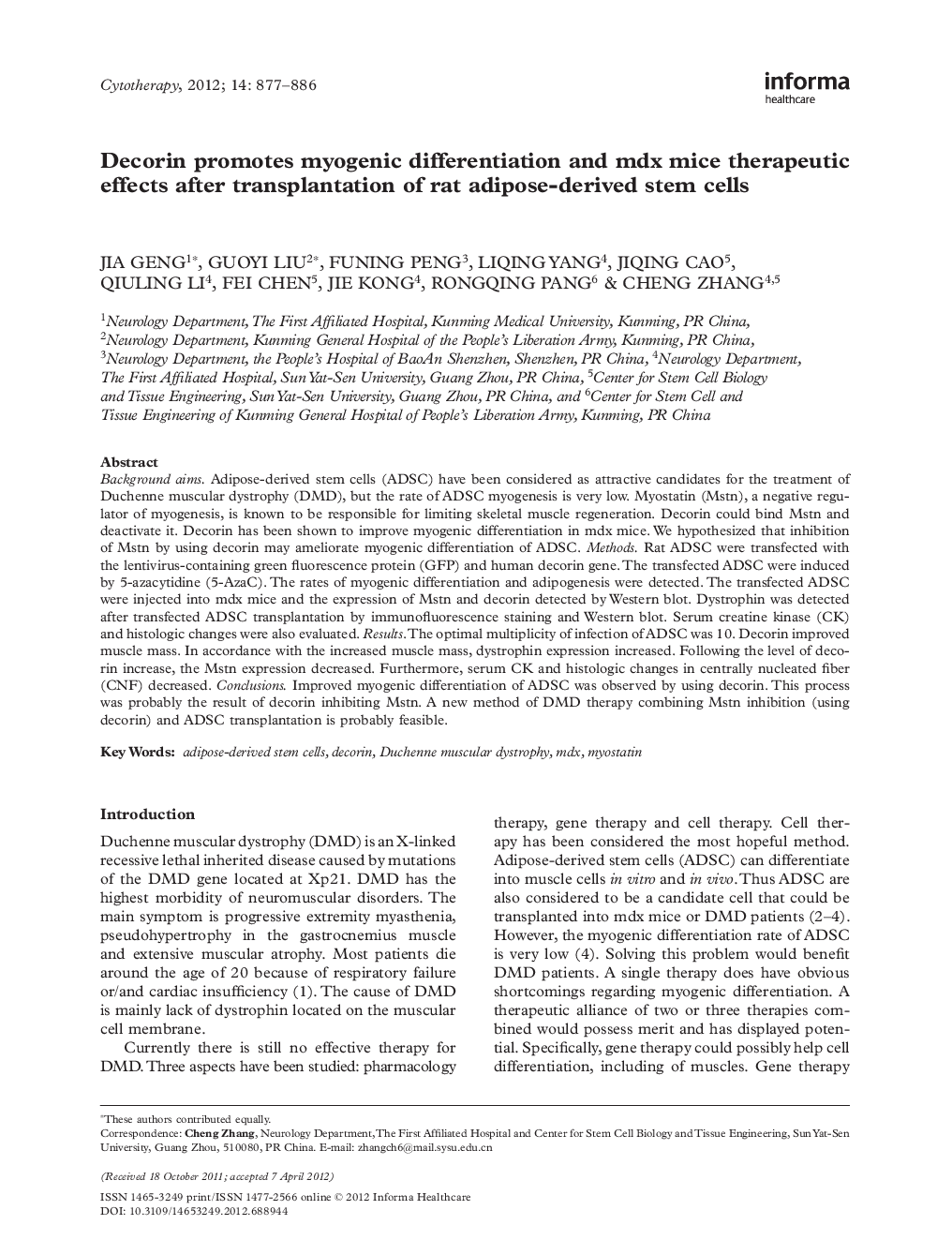| Article ID | Journal | Published Year | Pages | File Type |
|---|---|---|---|---|
| 2171617 | Cytotherapy | 2012 | 10 Pages |
Background aimsAdipose-derived stem cells (ADSC) have been considered as attractive candidates for the treatment of Duchenne muscular dystrophy (DMD), but the rate of ADSC myogenesis is very low. Myostatin (Mstn), a negative regulator of myogenesis, is known to be responsible for limiting skeletal muscle regeneration. Decorin could bind Mstn and deactivate it. Decorin has been shown to improve myogenic differentiation in mdx mice. We hypothesized that inhibition of Mstn by using decorin may ameliorate myogenic differentiation of ADSC.MethodsRat ADSC were transfected with the lentivirus-containing green fluorescence protein (GFP) and human decorin gene. The transfected ADSC were induced by 5-azacytidine (5-AzaC). The rates of myogenic differentiation and adipogenesis were detected. The transfected ADSC were injected into mdx mice and the expression of Mstn and decorin detected by Western blot. Dystrophin was detected after transfected ADSC transplantation by immunofluorescence staining and Western blot. Serum creatine kinase (CK) and histologic changes were also evaluated.ResultsThe optimal multiplicity of infection of ADSC was 10. Decorin improved muscle mass. In accordance with the increased muscle mass, dystrophin expression increased. Following the level of decorin increase, the Mstn expression decreased. Furthermore, serum CK and histologic changes in centrally nucleated fiber (CNF) decreased.ConclusionsImproved myogenic differentiation of ADSC was observed by using decorin. This process was probably the result of decorin inhibiting Mstn. A new method of DMD therapy combining Mstn inhibition (using decorin) and ADSC transplantation is probably feasible.
